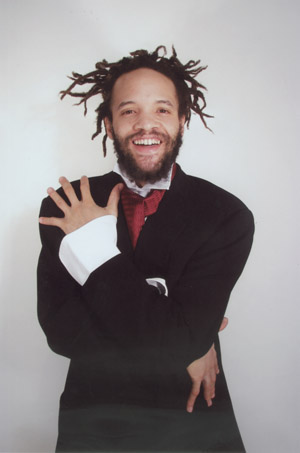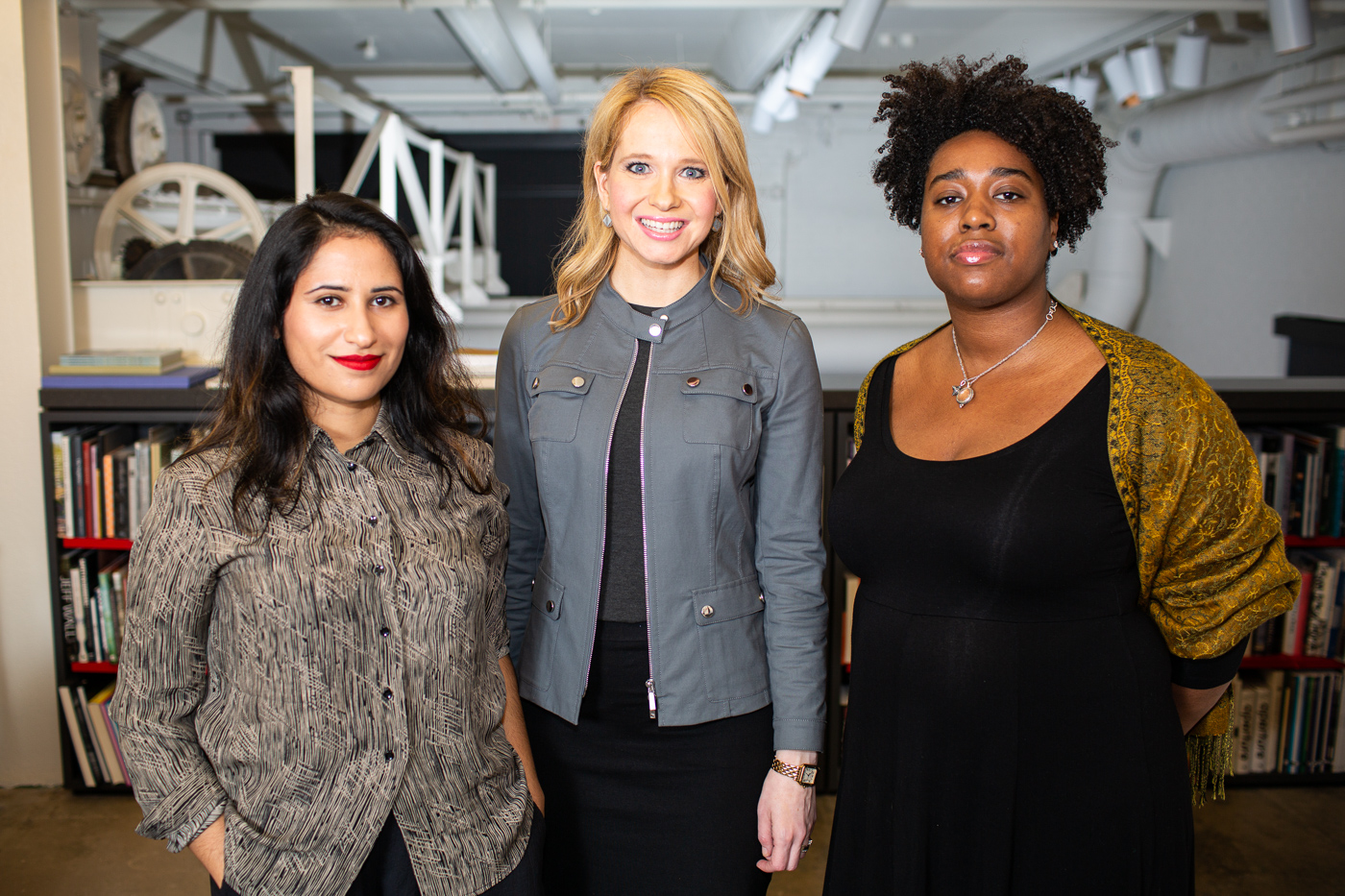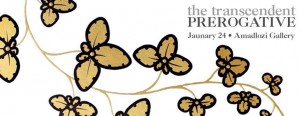Jamilah Sabur is an artist working across various disciplines including performance, video, and installation. Sabur was born in Saint Andrew, Jamaica and is interested in embodied cognition, social mimicry, dissonance, ritual, and the uncanny. We met with Jamilah to get a walk-through of her solo project, “If Defined, then Undefine,” at Dimension’s Variable. A project based on memories of her mother’s childhood home in Jamaica, as well as a colliding history of Simón Bolívar in Jamaica and flooded landscapes. Last summer we were lucky enough to see Jamilah’s powerful performance of “My Queen Before You go Tell my Horse,” at the Maggie Knox Gallery. During her performance, Sabur summoned the spirit of Michael Manley, the late former prime minister of Jamaica to get Jamaica’s debt canceled and allow the island to invest locally and restore economic stability and independence to the nation. Below is a transcript of Tiffany Garnett and my conversation with Ms. Sabur.
Sugarcane: Is If Defined, Then Undefined an extension of last year’s performance at Maggie Knox Gallery?
Jamilah: A few different things that were in the air, last year I was working with a group, there were a lot of Haitians who were leaving Brazil and making the 7,000-mile exodus traveling north. Many refugees often through Ecuador, and connect going through Colombia working with a series of coyotes, just a brutal trek and then coming through the San Diego border. I was standing in the shelter in Tijuana and a good friend of mine who is a painter; she lives in Tijuana, some of her peers were just joking about the influx of Haitians, she was horrified, and I was horrified to hear the language that was being thrown around. I was standing there thinking I wish there was a way for the people in Mexico and this larger Latin American community to see the descendants of people who liberated you. There would be no independence for any of these Latin American nations without Haiti. We should honor them. That’s when I started thinking about Simón Bolívar. He was in exile in Jamaica in 1815; growing up I didn’t know that. I started thinking about Simón, about the mass exodus of Haitians who are leaving Brazil. It was just crazy to me that there was no space in South America where Haitians would be accepted, it’s like Uruguay is in a better position than Brazil, right across the border. In my mind, the Simón Bolívar figure, similar to that performance is a channeling of a mediating figure. This show has been a way for me to organize all of these thoughts; this Simón Bolívar figure will come back in some future works. That figure, or this idea of having this kind of historical figure come back and recruiting him in the next phase of a battle. He was in exile in 1815 and then after Jamaica, he went to Haiti, and in his writings, it’s very clear that he acknowledged Haiti and he got a lot of help. The liberation of South America would not have happened. That concept, actually thinking about this idea of solidarity and dreaming about solidarity and the situation with the Haitians in South America, really trying to push this conversation especially in a place like Miami where I feel like immigrants are so segregated and not unified.

Above: Jamilah Sabur. “Untitled (diamond-latticework: 11 McKay Terrace, #Kingston 11). 2017.

Above: Jamilah Sabur. Untitled (convex struts), 2017.
2011 was the first time I played with this plaster process. For me, it’s an almost performative experience. As I was constructing the walls, everything I shared with you earlier went into it. Lately, I’ve been in a space where I’ve wanted to have or push this conversation, this idea of formalism, this embedded narrative.
Sugarcane: Did your mother support this work? Did she give you the freedom to be an artist?
Jamilah: Absolutely. It’s crazy growing up with Jamaican parents, to this day I’m just like wow, I feel so lucky. I feel so fortunate; I learned that my dad, I think this is a part where the freedom came from, he grew up in a very strict family and art was just something that you were not going to do. In 1968 in high school he was selected to go to Sandhurst Military Academy in England, but he wanted to study art; he didn’t end up going to England anyway after all due to financial difficulties.
Sugarcane: He wants to give you the gift of freedom to create
Jamilah: Growing up they were very supportive of this direction, and I feel this sense of pride being able to share or return this to my parents. In a lot of the work I’ve been making, I have been thinking about my parents, and when my mom saw that she was so surprised and excited, pairing her with Simón Bolívar, I was like mom, you guys are equals. Coming back to this idea of honoring the memory, history in a moment where I feel an urgency to preserve memory. I feel like in the reality of climate change; Jamaica is not going to be there in a hundred years. How do we start thinking about preserving this culture, preserving memory and how can we envision a possibility of cultural identity existing outside of this colonial construct. I’m also in a space where I’m interested in co-opting or re co-opting the conception of the Americas as this one territory.

Above: Jamilah Sabur. “Soberanía Solidaridad,” 2017.
There’s the South, and there’s Central, Caribbean islands, and North America. I would love to get away from nationalistic thinking. With the political work I was doing, I was just like why don’t I see more Jamaicans coming out to support the Haitians? I feel like we’re so stuck. Then again this was the tactic of this colonial structure of dividing groups. I keep thinking back to the parallel to FIFA and this sports mentality. We’re so much conditioned to think of ourselves as players, literally fighting. It’s a sport. In my mind, despite the language, we’re in a moment where I would love to see a united Latin America and Caribbean. We are perpetuating these blockages. With this show If Defined, Then Undefine, how do we undefine or redefine, it’s this push and pull and unraveling, rearranging, recreating this new meaning, a new being? Thinking of this architectural structure as door frames. These ripped out door frames; it says sovereignty and solidarity. For me, it’s like what is sovereignty without solidarity? Again, coming back to holding onto this construct of this national identity. In my mind, it’s like how do we just break that?

Above: Jamilah Sabur. “The water is high in salt (almond tree: 11 McKay Terrace, Kingston 11),” 2017
In my mom’s yard, she would always talk about this big almond tree. There was this moment where I was like well my mom’s house was not there during Simón Bolívar’s time, but I’m certain this tree was. I keep thinking about this idea of the object or the tree containing the memory of that period. Then also the tree as the being that can both channel the past and also project a future. I titled this piece “The water is high in salt.” Pointing to this moment of thinking how the almond tree can’t grow in salty sand or salty soil in Kingston where this tree existed. This in conversation with the changing climate, the changing landscape, and this idea, the perspective is from the ground. This idea of thinking about the salt, the salty water seeping in but yet the tree is aware, knows that it can’t grow in salt but is there trying to survive.

Above: Jamilah Sabur. “Jamaican Baldpate,” 2017.
This last one, the one with the bird my mom remembers. The Jamaican Baldpate looks like a fancy pigeon. I don’t know if you’ve ever seen them, but it has a white crown. It’s on my mind; this is the first of a series of paintings based on those birds that she remembers.
Sugarcane: Is this the core of new work or the culmination of past work?
Jamilah: I would say it’s the first, that it’s new work. I am very grateful to Frances and Leyden for providing this amazing, big space to work in. Honestly, I feel like it took the making for me to connect the conversation we’re having. This show for me represents kind of a dart board and seeing things being birthed just from these revelations. There’s a Montreal based publication I’m having this conversation in, and their prompt for the issue is this idea of ghost intimacy. It’s this idea again of channeling and looking at the past. I feel like even just the way I am wanting to switch my language and this idea of honoring the spirits that gave themselves for us. For me, I do have this, I wouldn’t say, sort of pessimistic view of the future, but our planet is dying. I feel like we’re in a very crazy, dark place but honestly the thing that does keep me going is thinking about the past and all the bodies that fought and existed. I’m in a moment where I’m thinking a lot about honoring history, honoring these moments and that is a way of constructing the future.
Sugarcane: What are you working on next?
Additional contributions to this post were provided by Tiffany Garnett
Featured Image Courtesy: Jordan Levin











